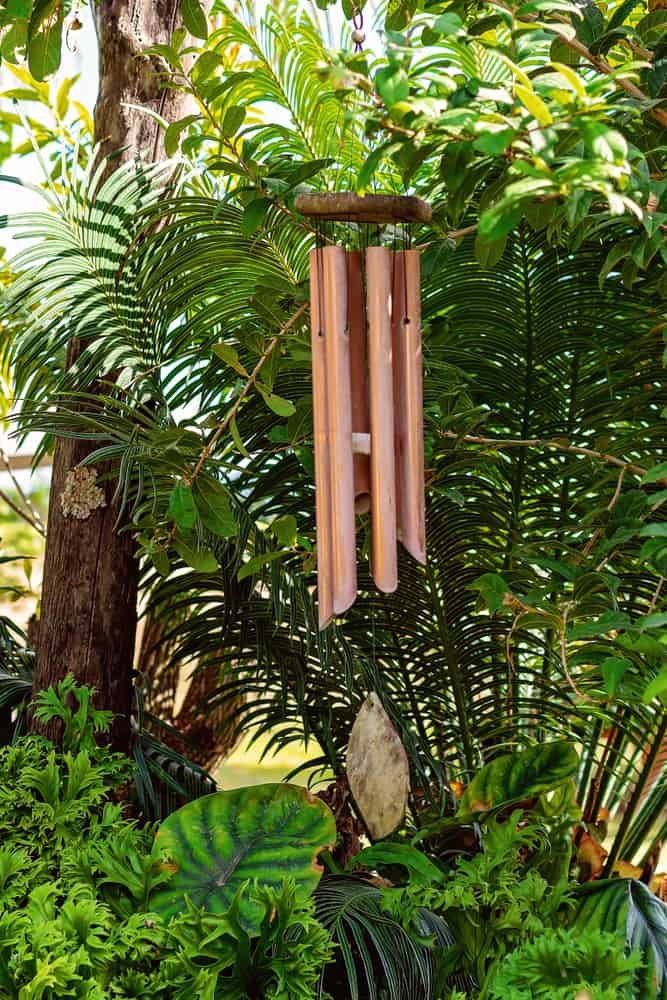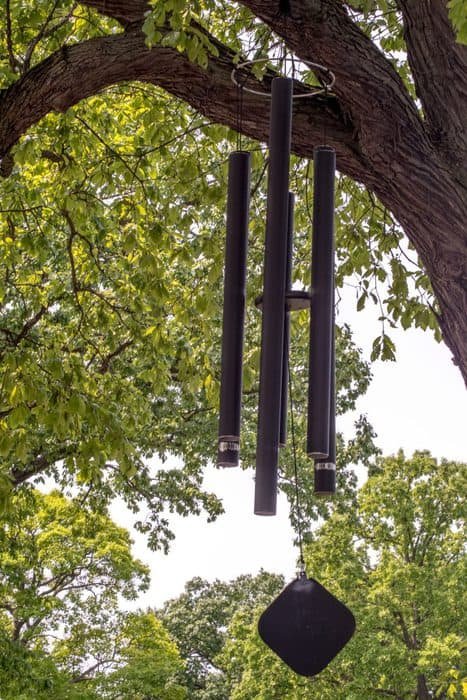What You Need To Know About Aluminum Wind Chime Tubing
There is something so tranquil about the music that is created by the breeze as it gently swirls the clapper of your favorite wind chime. It’s amazing how many different tones can be made with aluminum tubing. If you are thinking of getting into the wind chime-making business, you may be wondering how to use aluminum tubing to create the soothing tones that you love.
There are multiple sizes of aluminum tubing that can be used to create the sounds that wind chimes make as the wind blows through them. The variety in sizes allows you to create higher and lower tones, and when done properly, they can be tuned to specific notes/keys.

If you are interested in learning about how aluminum is used to make beautiful sounding wind chimes continue reading this informative article.
Table of Contents
Why Aluminum Tubing is Great for Wind Chimes
Aluminum tubing is a very popular medium that people use to create the sounds that a wind chime makes. While anything can be used to create a unique sounding and interesting-looking wind chime, this article will specifically discuss aluminum tubing.
Here are some reasons for its popularity:
- Aluminum can be tuned to specific notes/keys
- It is light-weight and easy to work with
- It is made of metal, so it is durable
- It is weather-resistant, so it can stand up to rain, snow, wind, etc.
Aluminum tubing is also fairly easy to come by, so you shouldn’t have to worry about where you will get your supplies. It can be purchased at most home improvement and hardware stores as well as online.
If you want a unique-looking wind chime that makes a great sound, you can find everything you need for tubing and other supplies at one of the oodles of websites that offer aluminum tubing in multiple sizes and colors. So, you have a lot of options available to feed your creative appetite.
How Size Affects the Tone of the Chime
You may be wondering how the size and length of a tube can affect the sound your wind chime makes. In this situation, size does matter if you are trying to achieve a certain sound.
The longer the tube is, the lower the sound will be, and as the diameter of the tube increases, the tone will become deeper. So if you are looking for a deep low calming sound, use longer tubes with a larger diameter.
The opposite goes for higher-pitched wind chimes. The shorter the length and smaller the diameter of the aluminum tubing, the higher the tone will resonate. If you prefer wind chimes that make a sort of light twinkling sound, then go for the smaller diameters. In this article we go over what notes different wind chime pipe lengths make.
Tuning Your Wind Chimes
Most wind chimes are tuned to a pentatonic scale which means that no matter in which combination the tubes are struck, you will hear a sound that is pleasing to the ear. The pentatonic scale consists of five notes C, D, E, G, and A.
You may be wondering how you could make a piece of aluminum tubing sound like a musical instrument, but it is possible. There will be measuring involved, and it is beneficial to have a piano or some other tuning device handy, so you can be sure your tubes are in tune. Here is an article that goes over more information about tuned wind chimes.
There are websites available that offer their opinions about where you should drill and how far apart you should hang your wind chime tubes. If you drill your hole in the wrong place, it can affect the sound of the wind chime.
On average, you will need to measure between two and three inches down from the top of the tube. This is where you will drill your holes.
For example, if you choose to use ¾” aluminum tubing, you will need to make the following measurements:
| Musical Note | Length of Tube | How Far to Drill From the Top |
| C Sharp | 11 ½” | 2 9/16” |
| D Sharp | 10 7/8” | 2 7/16” |
| F Sharp | 10” | 2 ¼” |
| G Sharp | 9 7/16” | 2 1/8” |
| A Sharp | 8 7/8” | 2” |
Some individuals fasten a tiny screw through the holes and attach the tubes to the top of the chime with options of:
- Fishing line
- Thin wire
- String
Other people will run the string directly through the drill hole to attach the tubes to the top of the wind chime.
The following is an example of aluminum tubing that you can purchase and cut to your desired length. They are not pre-drilled, so using these materials will require some measuring and a little bit of work to drill the holes and cut the lengths of the tubes.
Uxcell™ Seamless Aluminum Round Tubing
[amazon fields=”B07WLN69T1″ value=”thumb” image_size=”large” image_alt=”round tubing”]
This particular aluminum tubing is seamless and comes in 12” lengths. The tubes can be purchased in diameters as low as two millimeters or up to nine millimeters. These tubes are easy to cut and drill through.
[amazon fields=”B08XKM15D6″ value=”thumb” image_size=”large” image_alt=”tube cutter”]
If you decide to bite the bullet and cut your own aluminum tubing lengths, then you will definitely need this handy little gadget. It will easily cut your tube to any length you desire with minimal effort required by you. This easy-to-use tube cutter can cut diameters from 3mm – 33mm.
Personal Preferences Determine End Result
There are different theories and methods on how to create the best-sounding wind chimes. The route you choose to use will depend upon your personal style preferences and how strongly you want your chime to be in tune.
If you are not worried about a particular sound and just like random wind chime sounds, you don’t have to worry about measuring or how you hang the tubes.
Importance of Sail and Clapper Size and Weight
The size and weight of the sail and clapper can have an effect on the sound that comes from your wind chime. As you are sitting in your garden or your favorite outdoor location, consider the sound of your wind chimes.
Do you like to hear them continuously whenever a slight breeze blows, or do you prefer them to have some more weight and only play when the wind is blowing more strongly?
It is a matter of personal preference and what you like. Some people get annoyed if they hear wind chimes all day, whereas other people never tire of the sound.
A sail that is larger in size and weight will require a stronger wind to blow. However, if you use a smaller, more light-weight sail and clapper, the wind will move it more easily, and you will hear your wind chimes music more than if you use a heavier ensemble.

Avoid the Guess Work – Buy Pre-Drilled
If you love doing crafts, but perhaps you don’t want to worry about the technicalities of measuring and cutting, then your best bet would be to purchase aluminum tubing that is already pre-drilled and cut to the lengths that you desire.
The next section will give you examples of pre-drilled aluminum tubing for wind chimes.
ARTIBETTER Etched Aluminum Wind Chime Tubes
For a truly artistic and unique design, try using these beautifully etched aluminum wind chime tubes. They are pre-cut and pre-drilled for your convenience. This design may not suit everyone’s taste; however, it gives you a good idea of what is out there and can provide inspiration in the event that you wish to try customizing your wind chimes with some creative etching.
YAHON™ Aluminum Wind Chime Tubes DIY Kit
These aluminum wind chime tubes are great because they are pre-cut and pre-drilled to make it easier to put your wind chimes together. This product comes with 60 aluminum tubes that have been pre-cut to five different lengths and also includes the string for hanging them.
YEJI™Purple Aluminum Wind Chime Tubes
This is yet another creative option for wind chime tubes. These tubes are available in multiple colors, so you can really add some pizazz to any outdoor space. These aluminum wind chime tubes are pre-cut and pre-drilled to minimize the guesswork that can come with tuning a wind chime.
Let the Wind Make the Music
Now that you know a little more about how aluminum tubing is used when making wind chimes, you can let your creative juices flow and get to crafting. If your curious, we also go over more of the best pipes you can use for wind chimes here. Just remember to take your time and have fun. Before you know it, you will be relaxing outside as you listen to the wind make magical music.






Hello and thank you for this great article. I have had a large wind chime outside for quite a while and all the strings frayed and broke, there is just one tube left hanging. What do you prefer between fish line and metal wire? what will last the longest outside?
Thank you,
Hi Liz, thanks for the comment. I believe fishing line would be best as it’s more flexible than metal wire but the fishing line may degrade if it has a lot of sun exposure. Another choice is a thin nylon braided cord. Good luck with your project.
Theatrical wire is good, or the security cable used on store products with little alarm devices; is good wire. Very hard to cut , but it is very strong. Leather string also